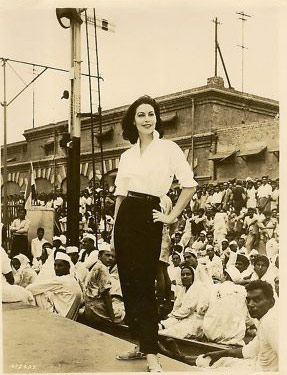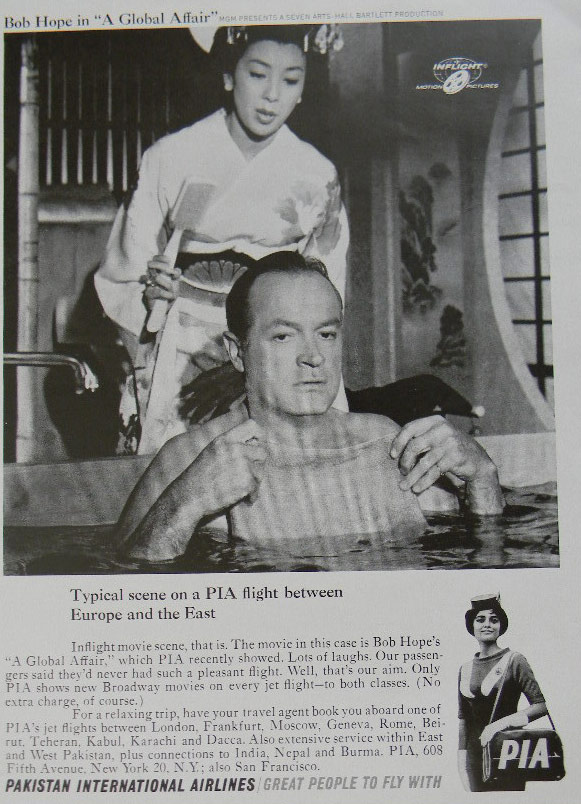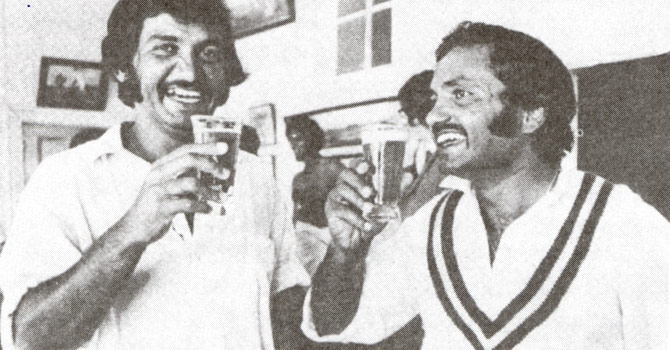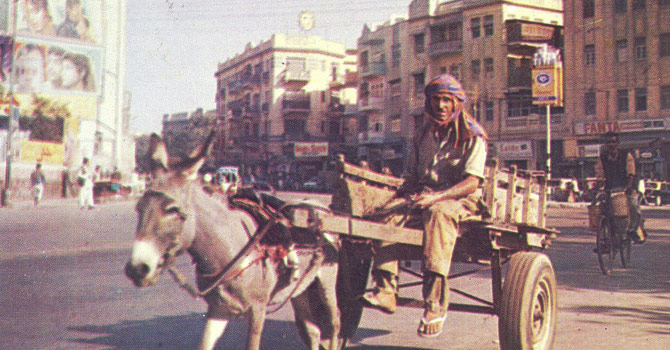Following is a sequel to the illustrated feature Also Pakistan.
There is very little memory left of a Pakistan that today almost seems like an alien planet compared to what it has been ever since the mid-1980s.
Here, I share with you some interesting photographs that I have managed to gather in the last couple of years of that alien country. A place that was also called Pakistan.
This sequel comprises images of vintage artifacts and photographs that couldn’t make it to the first part.

Pakistan Peoples Party (PPP) chairman Zulfikar Ali Bhutto, addresses a rally at Muhammad Ali Jinnah’s mausoleum in Karachi in 1969. (Photo courtesy of eBay.)
The rally was held immediately after a protest movement led by leftist students; labour and journalist unions; political parties, including PPP and the National Awami Party (NAP), had forced Pakistan’s first military dictator Ayub Khan, to resign.Construction of the mausoleum began in the early 1960s and was still underway when the rally was held. Wooden ladders and planks being used for construction purposes were acrobatically utilised by the crowd to gain vantage viewing points on the day of the rally.




Ava Gardner shooting a scene at the Lahore Railway Station in 1954.
Pakistani fans and artistes gather around the main cast of Bhowani Junction on the film’s sets in Lahore.

A series of apartment blocks, bungalows, fast-food joints and restaurants have sprung up in the area today – but no tourists, especially not the bikini-wearing kind.

PIA was one of the first airlines in the world to introduce in-flight entertainment. It regularly featured in all the prestigious top-10-airline lists for over 20 years, before dropping out in the mid-1980s.

This is a 1967 press ad published in LIFE magazine for the American insurance company, Continental Insurance.
The number of American and British tourists visiting Pakistan began to grow from the early 1960s. The trend hit a peak in the late 1970s before starting to dwindle and peter out in the mid-1980s.
It (in a tongue-in-cheek manner) addresses those traveling to Karachi and getting injured during a ‘camel crash.’

American Embassy building under construction in Karachi, 1957. (Photo courtesy of eBay.)
Completed in the late 1950s, the building became an iconic structure on Karachi’s Abdullah Haroon Road.
Apart from having a busy visa section, it also housed a state-of-the-art projection hall and a widespread library, which was used by generations of Karachi’s school and college students before it was closed down in the late 1990s.
Easy to access across the 1960s, 1970s and 1980s – the building was gradually barricaded and heavily fortified after the tragic September 11 episode in 2001. The visa section was moved to Islamabad, before returning to Karachi in 2012 (in a different building and compound).
This building faced at least four terrorist attacks between 2002 and 2006 and survived them all.
Though the US consulate has now moved to a different location in Karachi, the building still stands.

Part of the cast and crew of Pakistan Television (PTV)’s 1970 play, ‘Shazori,’ at a reception given in their honour by Canada Dry beverages company.
Shakeel (third from left) became a heartthrob and sex symbol, being cast in a number of famous PTV plays as a hero throughout the 1970s. He also tried his luck in films but failed to gain the kind of popularity he enjoyed on television.
Today, in his sixties, he still appears on the mini-screen as a character actor.

Newspaper ad (taken from DAWN’s 7 February, 1972 edition) announcing the arrival of a Lebanese belly dancer in Karachi.
Between the early 1960s and late 1970s, Karachi was dotted by a number of nightclubs that competed for clients by offering the best in-house pop bands, bars and professional belly dancers invited from cities like Beirut, Cairo, Tehran and Istanbul.
Nightclubs were ordered shut in 1977.

A vibrant 1973 poster prepared and printed by the Pakistan Ministry of Tourism to attract tourism to the city of Lahore.

A copy of famous spy novelist, Edward S. Arron’s 1962 book ‘Assignment Karachi.’
The book was one of the many he wrote that involved the adventures of CIA agent Sam Durell in various cities across the world.
This novel, which narrated the tale of Durell working with Pakistani authorities to capture Soviet-backed henchmen, became an instant best-seller in Pakistan.
However, in a quirky twist, some copies of this novel were set on fire by pro-Soviet leftist students during a demonstration (at the Karachi University) against Ayub Khan’s education policy in 1962.

A 1967 tourism poster for Karachi (printed by American airline Pan Am and used in Europe and the US).

A special stamp released by government of Pakistan in 1973, to plead the return of the 90,000 Pakistani prisoners of war captured by the Indian forces during the 1971 war.
Pakistan lost its eastern wing (East Pakistan) in the war. The break gave birth to Bangladesh.

A 1970 copy of a paperback version of the conspiratorial (and fictitious) book, ‘Protocols of Zion,’ printed in Pakistan in 1969.
The Protocols, a book describing a Jewish conspiracy to take over the world, first appeared in Russia in 1903. It was written by an obscure Russian anti-Semite author (most probably as a novel), but was given a whole new angle and widespread publicity by anti-Semite American industrial tycoons like Henry Ford and then by the Nazi regime in Germany.
Though constantly debunked as a hoax and a farce, the book soon became popular among Arabs incensed by the creation of Israel in 1948.
The book was little known in Pakistan until the Saudi Arabian regime used Pakistani publishers to print it for the Saudi monarchy in 1969.
Millions of copies of the above-seen book were published between 1969 and 1976 in Pakistan. Most of them were shipped off to Arab countries. In fact late King Faisal of Saudi Arabia used to hand a copy to visitors. He was assassinated by his nephew in 1975.
Many copies also found their way back on the shelves in Pakistan’s book stores. Initially, they became popular with anti-US leftist students, but by the mid-1980s, the book had almost entirely been adopted by the religious right.
It is interesting to note that almost no copies were published in Pakistan after the assassination of King Faisal in 1975, but newer editions with additions made by certain ulema, religious parties and Islamists in Pakistan, have been appearing ever since the 1980s.
The book has also been influential on popular conspiracy theorists in present-day Pakistan.

Two hippie tourists at a tea shop in Sibi, Balochistan, in 1972. .
Today, traveling to a Baloch town like the one in the picture has become a no-go area even for Pakistanis! (Photo courtesy Rory McLane).

A section of a bar in Karachi seen in 1974.
Before the sale of alcohol beverages was banned (to Muslims) in Pakistan in April, 1977, Karachi had the largest number of bars in the country.
This particular bar (called "Karachi On") was situated at Elphinstone Street, in the Saddar area of Karachi. The area was home to a number of nightclubs.
The picture belongs to Ali Huda Shah, whose maternal uncle was the owner of the bar. It was shut down in April 1977.
Today, though there are no public bars in Pakistan, however, licensed liquor outlets selling local beer, whiskey, gin and rum brands still operate in Karachi and the rest of Sindh.
The makers of these local brands are some of the leading tax-paying companies in the country.

A still from one of the most famous one-off plays on Pakistan television, ‘Quratul Ain’ (1975).
It starred Naveen Tajik (right), a Pakistani Christian, who, along with Roohi Bano and Uzma Gillani, was hailed as one of the finest TV actresses in Pakistan (in the 1970s).
‘Quratul Ain’ (scripted by Asfaq Ahmed) tells the story of a young man who wants to join the air force and is in love with a girl (Qurat).
Passionate about joining the air force, the young man is distraught after he begins to lose his eye sight.
Qurat tells him she doesn’t care and that they should get married. The young man agrees but then vanishes. Not even his family knows about his whereabouts. Qurat waits for him but is finally coaxed by her father to find another man.
Many years later she accompanies her husband to a Sufi shrine from where she wants to buy some bangles.
As the husband goes looking for a bangles shop, Qurat stumbles upon a blind Sufi fakir (vagabond) selling bangles from a sack.
He has long hair and a beard. He asks for one of her hands so he could put the bangles over her wrist. It’s her lost lover. She does not recognise him.
But he recognises her the moment he holds her hand. In shock, he lets go of his sack and her hand and vanishes into the crowd. It is left to the audience to figure out whether a surprised Qurat realises who the man was.
The play was part of PTV’s ‘Aik Muhabbat Soh Afsaney’ series in which Sufi themes were set in modern urban settings.
Naveen, though hugely successful as a TV actress and fashion model, failed to make a mark in films. She left for the US in the early 1980s.

A shelf in a shop displaying Scotch whiskey brands in Khyber Pakhtunkhwa’s ‘Bara market’ (smugglers’ market) in 1977.
The market was popular with both foreign tourists as well as Pakistanis coming from Karachi and Lahore to buy imported and/or smuggled cloth, clothes, shoes, electronic good and foreign whiskey brands.
The Bara area began to come under the influence of Islamist groups from the late 1980s and today the area has no such market and is in the grip of a violent and bloody conflict between armed fundamentalist outfits and the state of Pakistan.

Poster and still from 1975’s Pakistani film, ‘Dulhan Aik Raat Ki’ (A Bride for One Night).
The flick was Pakistan’s first Urdu film advertised as ‘For Adults Only.’ In the mid-1970s, British and American ‘adult films’ had become a hugely successful outing for young middle-class Pakistanis and couples, and by 1974-75, films (especially in Karachi) labelled ‘For Adults Only,’ were doing a roaring business.
Karachi’s Rio Cinema and Palace Cinema became known for running such films (Rio today is a gaudy shopping mall while Palace was converted into a marriage hall).
Such films were mainly low-budget European and American romantic farces in which nudity scenes and sexual content were allowed to be shown by the censors, thus the tag: ‘For Adults Only’.
Inspired by the period’s ‘Adult Film’ phenomenon, Mumtaz Ali Khan directed Pakistan’s first Urdu film that was ‘For Adults Only.’ It was appropriately called ‘Dulhan Aik Raat Ki’.
Staring late Badar Munir (then known as the ‘Charles Bronson of Pakistan) and a number of famous 1970s Punjabi and Pushtun film actresses, it was a raunchy fusion of violent Italian spaghetti westerns and 1970s European soft-porn.
It was disallowed a re-release in the 1980s by the Zia dictatorship and was only made available (on VHS) in the late 1980s. It is still not available on DVD, but can be found on VCD.

A video grab from PTV’s groundbreaking coverage of the 1970 general elections.
Running consecutively for 48 hours, the 1970 election transmission was one of the first long duration live events telecast by PTV.
Seen in the picture is famous PTV anchor of the 1970s, Laeeq Ahmed, pointing at the number of seats (162) won by the Bengali nationalist party in former East Pakistan, the Awami League (AL).
In 1971 AL rebelled against the West Pakistan military establishment (for not giving it the democratic right to lead the new democratic regime as a majority party), and after a bloody civil war, East Pakistan broke away and became the independent Bengali republic of Bangladesh.
Notice how the host is holding a cigarette in his hand while discussing the election results. TV hosts commonly smoked on the air until the practice was discontinued in the early 1980s.

A 1974 press ad of Red & White cigarettes. Just like in other airports of the world at the time, smoking was allowed in all areas of Pakistani airports as well. The shoot for this ad took place at the old Karachi Airport that worked as a hub in the region and was one of the busiest airports in Asia receiving up to 60 flights in an hour from around the world.
The man is sitting at a famous waiting lounge/restaurant at the airport (Sky Grill) that also had a full bar and was the only place at the airport that was centrally air-conditioned.

Former Pakistani Test batsman Sadiq Muhammad (left) and former Pakistan cricket captain, Mushtaq Muhammad, share a beer in Sydney in January, 1977.
The picture was taken inside the players’ dressing room at the Sydney Cricket Ground after Pakistan defeated a strong Australian Test side. This was Pakistan’s first Test victory against Australia in Australia. With the victory, Pakistan squared the series 1-1 after being one down in the series. Seen in the background is a shirtless Imran Khan who took 12 wickets in the match.

Pakistan cricket team’s famous pace duo, Imran Khan and Sarfraz Nawaz, at a nightclub in Melbourne in 1981.
The picture was taken during Pakistan team’s 1981 tour of Australia. Architects of various wins by the Pakistan team in the 1970s and early 1980s, Imran and Sarfraz who were both best friends but had a major falling out as politicians in the 1990s.
Sarfraz, a long-time Pakistan Peoples Party (PPP) supporter, joined the PPP after retirement (in 1988) whereas Khan formed his own party (1996). Nawaz changed allegiances last year, when he switched to the Muttahida Qaumi Movement (MQM).

A 1973 photo of Nawaz Sharif. Sharif came from a business family and according to a biography (published in 2004), he was a music and film enthusiast and a PPP/Bhutto supporter at college (in the late 1960s).
In the 1970s his family had a falling out with the PPP regime it nationalised a large part of the Sharif family’s businesses.
Nawaz joined politics in the 1980s, guided by anti-PPP dictator, Ziaul Haq. Today his party, the PML-N, is the second largest political party in Pakistan after the PPP.

End of an era: Karachi on the day the reactionary military junta led by Ziaul Haq toppled the Z A Bhutto regime (July 5, 1977). In the background is a large cinema that closed down in the 1980s.
*All images have been provided by the author.
Nadeem F. Paracha is a cultural critic and senior columnist for Dawn Newspaper and Dawn.com
The views expressed by this blogger and in the following reader comments do not necessarily reflect the views and policies of the Dawn Media Group.
Nadeem F. Paracha is a cultural critic and senior columnist for Dawn Newspaper and Dawn.com. He is also the author of two books on the social history of Pakistan, End of the Past and The Pakistan Anti-Hero.
He tweets @NadeemfParacha













































